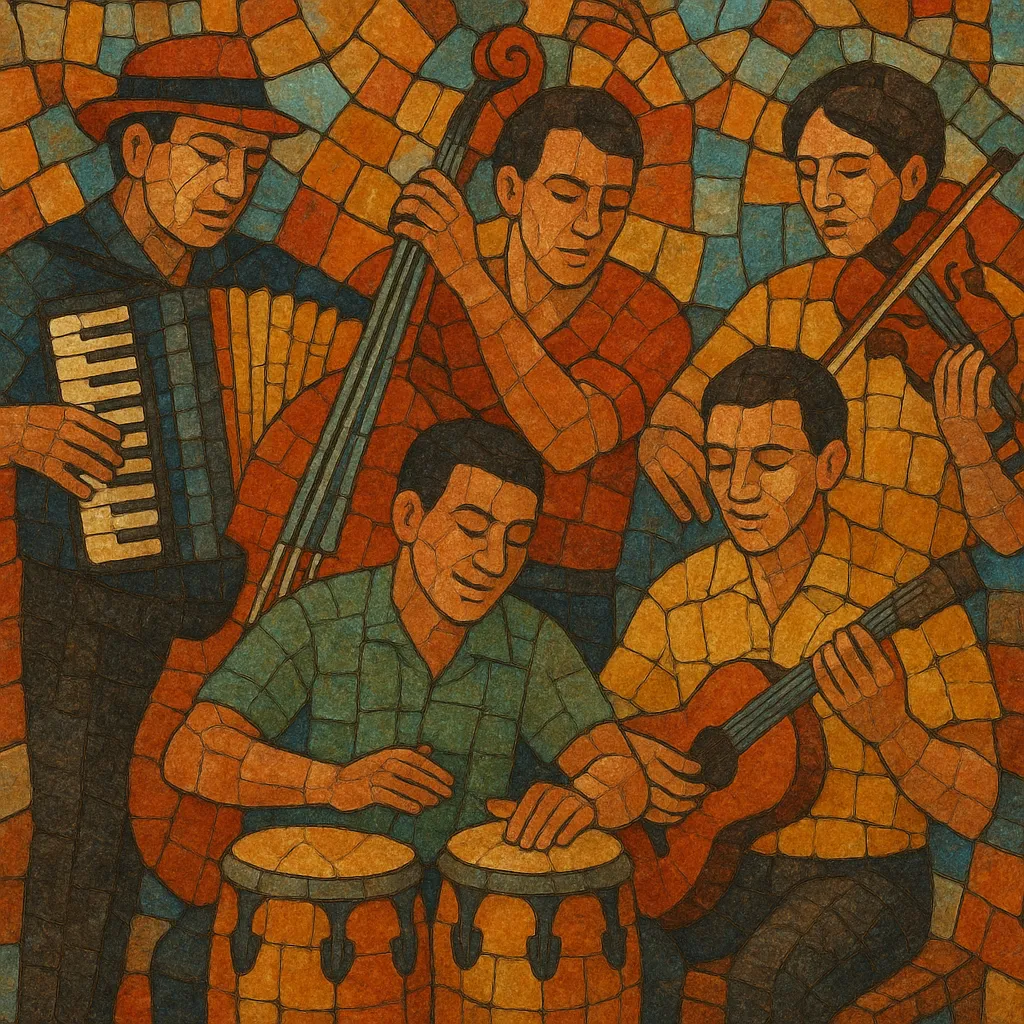Cuarteto is a high-energy dance music from Córdoba, Argentina, built on a brisk duple-meter "tunga-tunga" groove that emphasizes a driving bass-and-chord pattern.
Its core instrumentation historically featured a quartet—piano, accordion, violin, and bass—from which the style takes its name. Over time, drum kit, congas/timbales, and synthesizers expanded its sonic palette, while the piano’s left-hand ostinato and buoyant bass line remained central.
Characterized by catchy melodies, simple diatonic harmonies, and verse–chorus forms designed for continuous dancing, cuarteto’s lyrics typically revolve around romance, nightlife, working-class pride, and Cordobés slang and humor.
Cuarteto emerged in the 1940s in Córdoba, Argentina, as local dance bands adapted European immigrant dance styles (pasodoble, tarantella, waltz, polka) and Argentine tango to a compact quartet format. Pianist Leonor Marzano is often credited with crystallizing the signature “tunga‑tunga” left‑hand piano figure that underpins the genre’s propulsive feel, notably through the pioneering group Cuarteto Leo (founded in 1943).
Through mid-century, cuarteto became the soundtrack of neighborhood parties, clubs, and radio in Córdoba. The addition of drum kit and Latin percussion increased rhythmic punch, while accordion and violin kept a strong melodic profile. In the 1970s and 1980s, charismatic bandleaders such as Carlos “La Mona” Jiménez helped codify the cuarteto band format, stagecraft, and vocal style, establishing a deeply rooted local scene known as the movimiento cuartetero.
In the 1990s, artists like Rodrigo (Rodrigo Bueno) brought cuarteto to national prominence with modern production, radio-friendly hooks, and an energetic live presence. The style gained wider media exposure and became recognized across Argentina as a distinct, contemporary dance music connected to Cordobés identity.
Since the 2000s, cuarteto has integrated keyboards, brass hits, denser percussion sections, and pop-oriented arrangements without losing its signature two-beat drive. Bands and singers such as Banda XXI, La Barra, Jean Carlos, Tru La Lá, Ulises Bueno, and Damián Córdoba have refreshed the sound for younger audiences, while veteran figures continue to anchor tradition. Streaming platforms and large-scale live shows have further expanded the music’s reach, with ongoing experimentation that keeps the genre lively on dance floors.
Cuarteto remains a cornerstone of Cordobés cultural identity—festive, communal, and dance-forward—while serving as a bridge between European immigrant dances and modern Latin popular music aesthetics.


